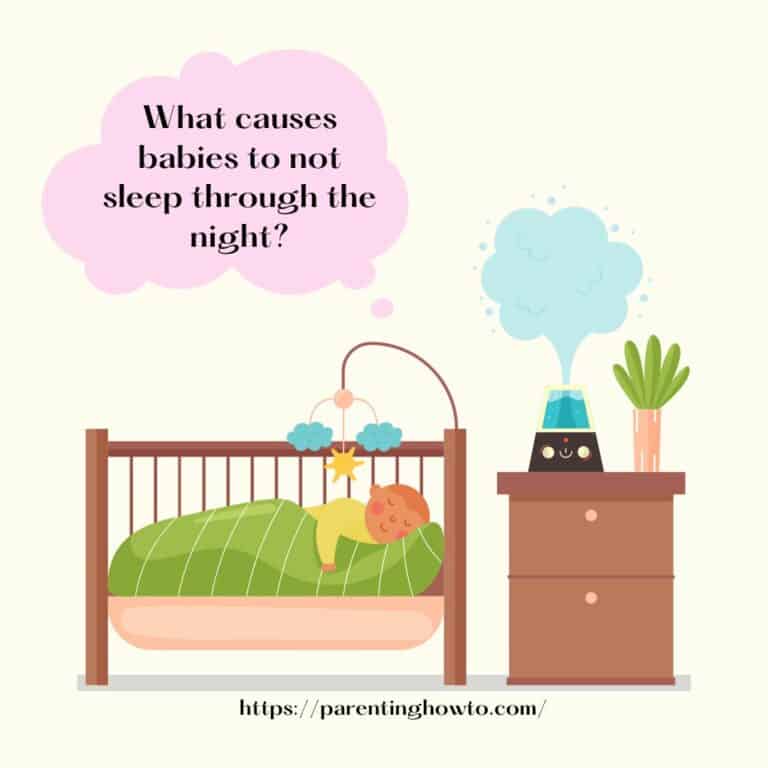Are you trying to get pregnant? Trying to figure out when your most fertile time of the month is? Look no further! An ovulation kit can help you identify the best time to conceive, giving you better chances at getting pregnant. In this blog post, we’ll discuss everything you need to know about ovulation kits and how they can help you.
Introduction to Ovulation Kits
Ovulation kits, also known as ovulation predictor kits (OPKs) or fertility monitors, are at-home tests you can use to determine when you’re most likely to ovulate. This is the time when you are most fertile and have the highest chance of becoming pregnant. Ovulation kits work by testing your urine for the luteinizing hormone (LH) which is released shortly before ovulation. If you have been trying to conceive for a few months without success, an ovulation kit may help identify your most fertile days so you can increase your chances of becoming pregnant.
Ovulation kits are similar in design to the pregnancy tests found in many convenience and grocery stores. But instead of indicating whether or not you are pregnant, ovulation test strips detect the LH surge that signals that ovulation is about to occur. With such a short window to conceive every month, using an ovulation test kit improves the guesswork of predicting your most fertile days.
What Does an Ovulation Kit Do?
An ovulation kit is an at-home test that is used by women to determine when they are most likely to get pregnant. The kit works by detecting a rise in luteinizing hormone (LH) in the urine, which signals the ovary to release an egg. This surge of LH happens immediately before ovulation, and by pinpointing this surge, a woman can learn when she is most fertile. Ovulation kits come in a variety of forms, including test strips, digital readers, and midstream tests. The test results provide an estimate of when ovulation will occur, which can help women time their intercourse to increase the chances of getting pregnant.
When Should You Use an Ovulation Kit?
When it comes to using an ovulation kit, timing is key. Ovulation typically occurs about halfway through your menstrual cycle, so you should ideally take your first test a few days before then. If you have a 28-day cycle, for instance, it’s best to start testing on day 10. Taking your test in the morning may give you the best results. You can also start testing 4-5 days before your suspected ovulation date if your cycles are regular. Modern Fertility suggests taking an ovulation test in the afternoon (between 12pm and 6pm) for the best chance of success. While a positive test doesn’t always mean you will ovulate within 24-36 hours, it can help you identify the most fertile days of your cycle.
How Accurate are Ovulation Kits?
Ovulation kits are highly accurate when it comes to predicting your most fertile days. Most urine ovulation kits detect your luteinizing hormone (LH) surge, which is a reliable indicator of ovulation. These kits have been found to be 97% accurate in detecting the LH surge, so you can rest assured that they will accurately tell you when it’s time to start trying to conceive. Additionally, major-brand ovulation kits have been found to have an accuracy rate of up to 99%. Clearblue Easy Digital Ovulation Test, Easy Read, One Month Supply, for example, promises a 99% accuracy rate. With this type of accuracy, you can be sure that you won’t miss out on any of your most fertile days.
Different Types of Ovulation Kits
Ovulation kits come in many different types and offer different testing methods. The two main types of ovulation tests are strip-based tests and midstream tests. Strip-based tests, such as the Modern Fertility Ovulation Test, require a person to dip a strip into their urine sample and then wait for a certain amount of time before reading the results. Midstream tests, like the Easy@Home Ovulation Test Strips 100-Pack, allow people to urinate directly onto the device and then read the results right away. Fertility Monitors, like the Clearblue Easy Fertility Monitor, are a more expensive option but offer a higher level of accuracy. In addition to these types of ovulation tests, there are also other options such as the MomMed Ovulation Test Kit HCG15-LH40 and the Clearblue Advanced Digital Ovulation Test.
No matter which type of ovulation kit you choose, it is important to follow the instructions carefully and always read the results correctly. All ovulation kits work by detecting the luteinizing hormone (LH) surge in your urine that signals the start of ovulation. Knowing when you are most fertile will help you plan for conception, so using an ovulation kit can be a great way to increase your chances of becoming pregnant.
How to Use an Ovulation Kit
Ovulation kits are easy to use and can greatly increase your chances of getting pregnant. To use an ovulation kit, you will need to collect a urine sample and dip the test strip into it. Depending on the type of ovulation kit, you may need to wait a few minutes for the results. Once you have the results, they can help you determine when you are most fertile and when you should have intercourse to increase your chances of getting pregnant. It is important to note that results can vary from person to person, so it is best to keep track of your results over time to get the most accurate picture. Additionally, it is recommended that you test any time in the afternoon from 10:00 AM – 8:00 PM, as this is when LH levels tend to be highest, and you won’t miss the peak.
Benefits of Using an Ovulation Kit
One of the major benefits of using an ovulation kit is its ease of use. Ovulation tests are just as easy to use as home pregnancy tests and provide accurate results. Additionally, ovulation kits are widely available and can be purchased online or at most pharmacies.
The ovulation kit looks for a rise in the luteinizing hormone (LH) which signals when a woman is ovulating and an egg is released. This helps to pinpoint an individual’s most fertile window, allowing them to take advantage of their optimal time for conception.
Ovulation kits are also much more precise than other methods of monitoring ovulation. When used correctly, they can be up to 97% effective in detecting the LH surge. This makes them highly reliable and accurate when it comes to predicting ovulation.
Finally, by helping to predict the optimal time for conception, ovulation kits can help couples increase their chances of becoming pregnant. This makes them a great tool for those hoping to start or grow their family.
Risks and Limitations of Using an Ovulation Kit
When trying to conceive, using an ovulation kit can be a great way to track your ovulation cycle and increase your chances of getting pregnant. However, there are some risks and limitations associated with using an ovulation kit that you should be aware of before you decide to use one.
The first risk is that the ovulation tests are not always accurate. They detect the luteinizing hormone (LH) surge that precedes ovulation, but they can’t confirm whether you have actually ovulated. Women over 40 and women near menopause also have high LH levels, which can lead to false positives. Furthermore, some fertility medications can interfere with the accuracy of the test results.
Another limitation of using an ovulation kit is its cost. The tests can be expensive and may not be covered by insurance.
Finally, some women may find it difficult to interpret the results of their tests, as the lines on the stick tests may be faint or hard to read. Moreover, if you’re using a digital ovulation test, it may not detect a short luteal phase or other irregularities in your cycle.
Overall, while ovulation kits can be a helpful tool when trying to conceive, it’s important to be aware of their risks and limitations before deciding to use one.
Cost of Using an Ovulation Kit
Using an ovulation kit can be an affordable way to monitor your fertility and help you increase your chances of conceiving. The cost of ovulation kits varies depending on the type and brand you purchase. Standard urine-based ovulation predictor kits (OPKs) typically cost between $13 and $35 per cycle. Digital tests cost a bit more, usually ranging from $20 to $60 per cycle. Some kits come with a pregnancy test, too. Additionally, at-home ovulation tests are available that use different methods, such as saliva or sweat, and usually cost around $21 for one box of 30 strips, or $56 for three boxes.
Alternatives to Using An Ovulatiom Kit
When it comes to tracking ovulation, there are many alternatives to using an ovulation kit. Many women use the menstrual calendar method, which involves tracking their menstrual cycles, looking for patterns, and predicting when they will be most fertile. Other women use basal body temperature (BBT) charts to keep track of their temperatures each day and predict when they will be most fertile. There are also fertility awareness apps available that will track your cycle and help you predict when you are most likely to conceive. Finally, there are over-the-counter ovulation predictor tests, which are similar to an ovulation kit but more affordable and widely available.
Tips for Increasing Fertility When Trying to Conceive
When trying to conceive, there are a few tips that can help increase your chances of success. Tracking your period and monitoring ovulation are important factors to consider when trying to conceive. There are also several methods that you can use to help figure out your most fertile days. Using an ovulation test kit is an effective way to identify when you’re most likely to ovulate, increasing the chances of conception. Fertility monitors take the guesswork out of ovulation tests and can be used to accurately identify your most fertile days. Eating foods rich in antioxidants such as folate and zinc can be beneficial for both men and women. Eating a bigger breakfast, avoiding trans fats and cutting down on carbs (particularly if you have PCOS) can also help improve fertility. It’s also important to swap protein sources and choose healthy fats to increase fertility when trying to conceive.
Questions to Ask Your Doctor About Anovulatiom kit
When it comes to using an ovulation kit, it is important to speak to your doctor about any concerns you may have. Here are some questions to ask your doctor before using an ovulation kit:
– What type of ovulation kit would be best for me?
– How long should I use the ovulation kit before seeing results?
– Are there any side effects to using an ovulation kit?
– What should I do if my ovulation results are not what I expect?
– What other fertility tests or treatments do you recommend?
– Are there any risks associated with using an ovulation kit?
– How can I increase my chances of conceiving with the use of an ovulation kit?
Your doctor can provide you with individualized advice tailored to your specific fertility needs. It is important to ask questions and get all the information you need before deciding whether or not an ovulation kit is right for you.
Conclusion
Conclusion. Ovulation kits are a great tool for people who want to determine their fertile pattern. There are several ways to test for ovulation, including urine test kits to measure LH levels, blood tests, and the basal body temperature (BBT) chart. These tests can help women identify the optimal time for conception. While these kits can be a helpful tool, it is important to keep in mind that it is still important to consult with a doctor who can provide guidance and support throughout the fertility journey. Additionally, there are other alternatives such as tracking menstrual cycles and monitoring cervical mucus that can be used in conjunction with or instead of an ovulation kit.



